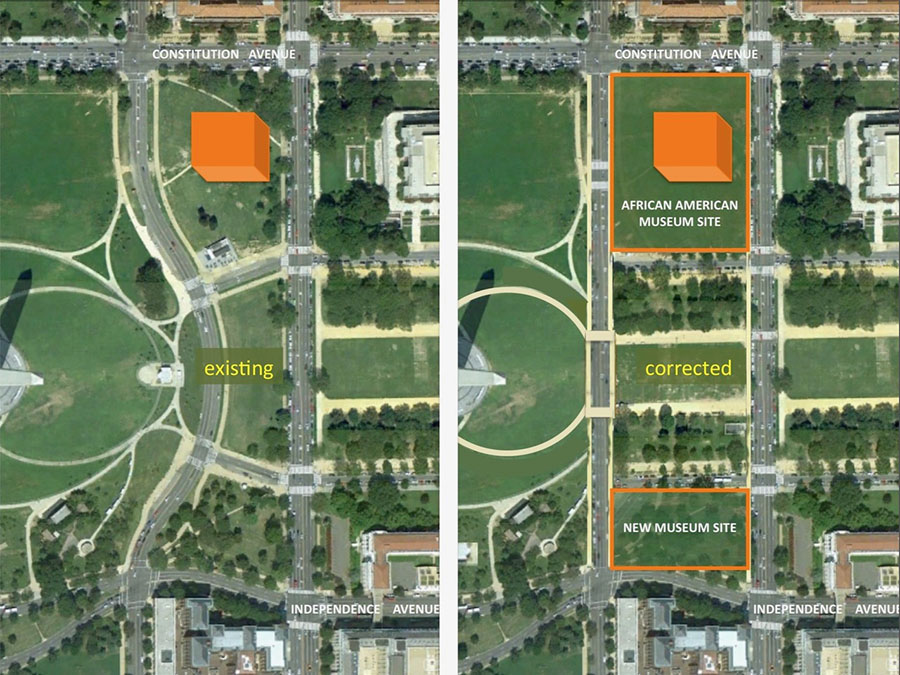By Judy Scott Feldman, PhD
The Smithsonian announced in October its choice of two sites on the Mall for its new museums, the National Museum of Women’s History and the National Museum of the American Latino.
The Commission of Fine Arts and National Capital Planning Commission criticized both choices, stating that the Mall is “complete” and can’t accommodate any additions. The museums should go elsewhere, off the Mall.
But Smithsonian Secretary Lonnie Bunch defended the decision in The Washington Post stating that locating the museums on the Mall “will signal to all that America understands the power of embracing our shared past, and that confronting our nation’s complicated history will make for a better shared future.”
The National Mall Coalition agrees with Secretary Bunch in principle and supports his choice of sites – perhaps to the surprise of those who have followed our advocacy over the years – for two reasons.

First, this controversy should spur Congress to finally take the initiative to establish a new comprehensive plan for the Mall to guide future growth of this stage for our democracy, including identifying new sites on the Mall for future museums and memorials. It’s unreasonable and unfair to tell the American public their stories don’t belong on the Mall.
Congress should immediately create a new McMillan-type commission, now 120 years after the 1902 McMillan Plan, to create the long-term, sustainable plan for the Mall in the 21st century, the 3rd Century Mall.
Second, the two sites are proof the Mall is not “complete” in any urban design sense. These plots are in fact awkward and pedestrian-unfriendly parts of the Mall, too long neglected. Walk there and see for yourself.
The South Monument site, on the Independence Avenue side of the Mall opposite the National Museum of African American History and Culture, was intended in the historic 1902 McMillan Plan to include a structure of some kind. But the curve of 15th Street – remnant of the 19th century Mall – was never straightened as planned. Straightening 15th Street now could improve not only the museum plot but also this entire section of Mall to the African-American Museum.
The Tidal Basin site, intended in the 1902 plan to be a wide-open public space, the “Washington Commons,” instead was given over in the 20th century to crisscrossing roads and heavy vehicular traffic. Try walking from the Washington Monument to the Tidal Basin – while dodging cars and buses – and maybe you’ll agree it could be improved. Coalition architect and vice-chair Arthur Cotton Moore, sadly who died recently, proposed how realigning the roads and constructing a pedestrian bridge to the site from the Washington Monument would create a safe and welcoming site for not only one but two museums.
When Congress declared the Mall a “completed work of civic art” in 2003 their intention was to prevent overbuilding of new monuments and museums. It was not a design judgment. In fact, the Mall we know today is an ever-evolving expression of America’s history and culture, and parts of the Mall design – including the two museum sites – deserve to be recognized as potential meaningful chapters in that American story.
• Judy Scott Feldman, PhD, is chair of the National Mall Coalition
Tags: museums, National Museum of the American Latino, Smithsonian, Women's History Museum
